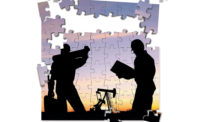The first use that comes to mind when you think of knives is food and kitchen applications, but most workplaces use box cutters and utility knives. Knife safety is important in all industries.
Common cases of accidents
The most common cause of accidents related to box cutters occurs when an employee uses a regular knife instead of a box cutter and is distracted or slips while cutting the top of a box, cutting himself. Tips to keep in mind include:1
- Approach work in a balanced body position.
- Turn the item to be cut 5 degrees to the left so you are cutting away from the body.
- Look at the cut line — never look away or become distracted by talking with someone.
- Place your other hand on the opposite side of the case away from the cutting line.
Knife injuries often happen when the knife slips during cutting or trimming. In most cases the blade comes into contact with the worker’s other hand, causing a laceration to the hand and/or fingers. Injuries can also occur to other parts of the body, including the hand operating the knife.
The type of knife used and how it is handled, sharpened and maintained are very important to ensure worker safety and preventing injuries. The type of injuries that occur from the unsafe use of knives range from small nicks to serious disabling cuts.
OSHA says using a dull knife is one of the most common mistakes.2 According to OSHA, using a dull knife will cause you to use greater force, which increases your chance of several kinds of injury, such as cuts, amputations, stabbing wounds into your leg, arm or body, and increasing joint and nerve pain from repetitive motions that can be a warning sign of permanent crippling injury.
Utility knives
Employees use utility knives to cut open boxes, tear away shrink-wrap from packages, cut drywall, and open bags. Injuries typically occur because of improper use or the use of the wrong type of utility knife for the job. More than $300 million is spent each year for hand lacerations alone, according to OSHA.3
It’s important for workers to use the proper size blades or replace defective retraction mechanisms. Some companies use self-retracting utility knives – the blade automatically retracts into the handle when not in use.
Basic knife-handling tips
- Keep knives sharpened, and let other staff know when knives are newly-sharpened.
- Never touch knife blades.
- Use a knife only for its intended purpose; use the appropriate knife for the cutting job.
- Place a damp cloth under a cutting board to prevent slipping of the board.
- When interrupted, stop cutting and place knife down on a flat and secured surface.
- Never place knives near the edge of a countertop.
- Never leave a knife soaking in a sink of water.
- Let a falling knife fall. Step back, warn others. Do not try to catch the knife.
- Carry knives with the cutting edge angled slightly away from your body.
- To hand a knife to someone else, place it down on a clean surface and let the other person pick it up.
- Store knives properly in racks or knife sheaths.
References:
1. www.safetytoolboxtopics.com/Small-Tools








